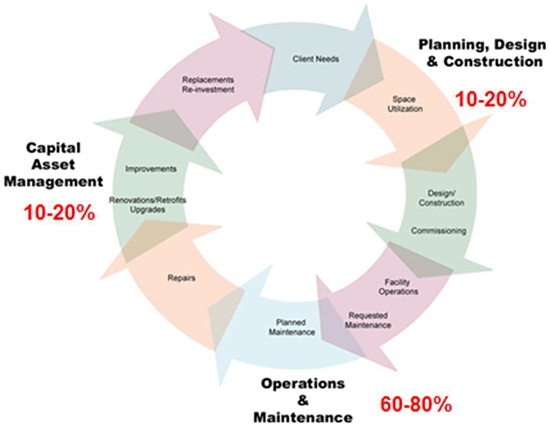How BIM can optimize trade coordination for your project needs?


Building Information Modeling (BIM) data encompasses all documentation
for facility operations and maintenance. This doesn’t
provide a format for how the information should be presented. However, BIM data is significant for successfully using BIM
during operations and maintenance and integrating BIM with CMMS (computerized
maintenance management system) and other data systems.
As there isn’t a standard model, every organization should develop a standard practice for BIM data requirements, matching asset methodology, classification structure, and asset data. In contrast, the COBie standard can be implemented for defining the data attributes.
A benefit ofusing COBie is that several software vendors are able to get integrated modules
in their systems, enabling data transfer from Building Information Modeling into their system. COBie is the standard BIM data format, though BIM doesn’t entail COBie formatted
data. Architectural, engineering, and construction professionals are able to get
COBie data as a simple spreadsheet of facility assets.
General, schematic, and detailed size & location, including materials & object parameters for architects, contractors, civil engineers, facility managers, MEP engineers, structural engineers, trade contractors, and other project stakeholders.
Structure of the IFC data model Image Source:- www.researchgate.net
Read More :- How BIM (Building Information Modeling) Helps HVAC?
Even if all the systems are not used extensively, but are available for use as standards or the starting point for the development of customized model views. Irrespective of the asset model, it is significant that the asset data model should be defined at the early stage of the construction process.
This procedure is effective only after BIM is authored and model attributes encompassed in Building Information Modeling. Undertaking this technique during the pre-construction stage eliminates rework.
The planning and design phase of a construction project is an early stage in the project life cycle where the project's concept and specifications are developed, and the design of the facility is created. It involves a series of activities and processes that lay the foundation for the successful execution of the construction project.
 |
| A flow chart of Life-cycle Management |
So, if you want facility operations and maintenance with BIM, get in touch with one of the best BIM service providers company in USA and collaborate on your design and construction for facility management. A model structure also encompasses an asset location coordinate system, connecting BIM to a true coordinate system for multiple facilities and linear civil infrastructure including utilities, parking lots, runways, and roadways. If BIM is not developed using a common coordinate system, it would be hard to blend it to integrate models with external data sources. BIM needs to be tied to the coordinate system of the world for maximizing interoperability with external databases.
Also Read:-
Top 6 Challenges of Implementing Artificial Intelligence
What is the purpose of 3D scanner in reverse engineering?
How Artificial Intelligence impact on Construction Industry
Comments
Post a Comment